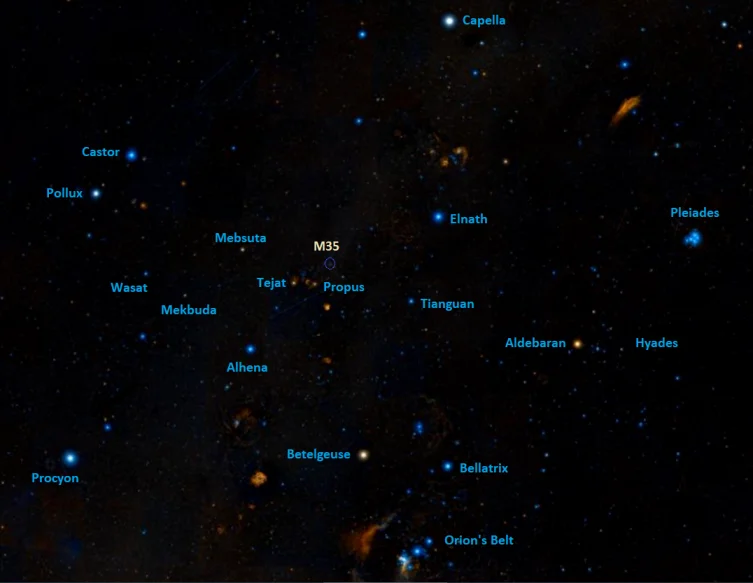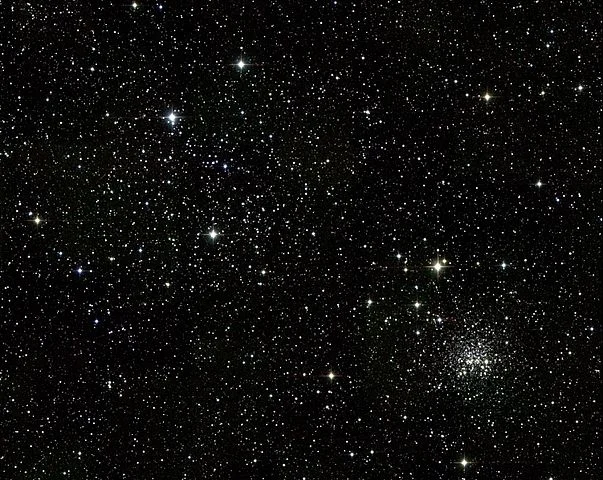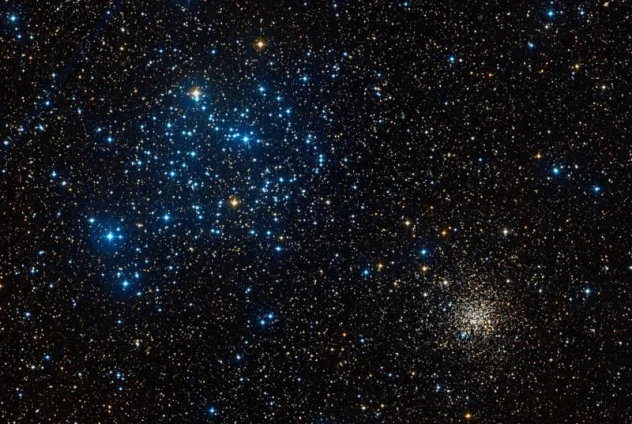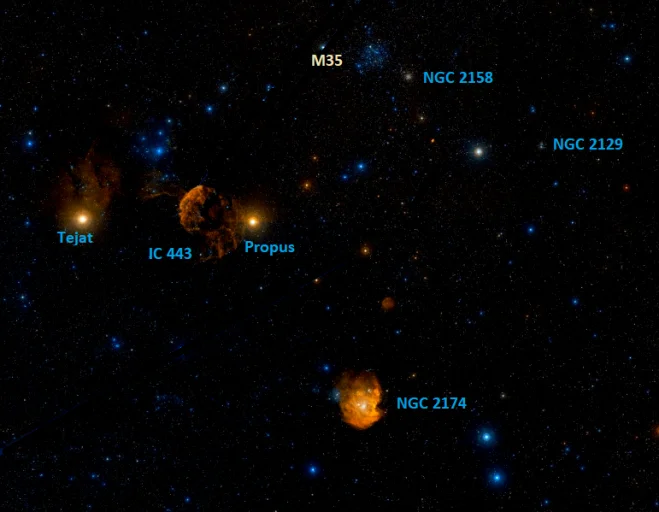Gemini contains a single Messier object, the open cluster Messier 35. The cluster lies in the western part of the constellation, near the border with Taurus. With an apparent magnitude of 5.1 and an apparent size of 28 arcminutes (about the same as the full Moon), the cluster is easily observed in binoculars. It is visible to the naked eye in exceptionally good conditions.

Messier 35 lies roughly halfway from Pollux, the brightest star in Gemini, to Aldebaran, the brightest star in Taurus. The cluster appears just north of Propus (Eta Geminorum, mag. 3.15 – 3.90), the red giant star that marks the foot of the northern twin (Castor), and 3.5 degrees northwest of its brighter red giant neighbour Tejat (Mu Geminorum, mag. 2.857). Tejat and Propus can be found by following the line of the V-shaped Hyades cluster from Aldebaran through Tianguan (Zeta Tauri) to the east. The Hyades outline the head of Taurus, while Tianguan marks the Bull‘s southern horn.
Messier 35 lies 3,870 light years away and is about 11 light years across. It has a mass of 1,600 Suns. Its estimated age is 175 million years. The cluster contains 418 probable members and up to 4,349 stars with a 50% membership probability.

M35 lies in an area of the sky that contains several other relatively bright deep sky objects. The open cluster NGC 2158 appears just southwest of M35. The two are not physically related. NGC 2158 lies considerably farther away, at an approximate distance of 11,000 or more light years. It appears smaller and fainter than M35, with an apparent size of 5 arcminutes and an apparent magnitude of 8.6. The two clusters appear in the same field of view.

The open cluster NGC 2129 appears southwest of NGC 2158. It lies 7,200 light years away and has an apparent magnitude of 6.7. It is brighter but smaller than NGC 2158, with an apparent size of 2.5 arcminutes. It has a physical diameter of about 10.4 light years. The estimated age of the cluster is 10 million years.
The Jellyfish Nebula (IC 443), a magnitude 12 supernova remnant, appears between Tejat and Propus (closer to Propus), southeast of M35. The remnant lies about 5,000 light years away and has an angular size of 50 arcminutes. If it were visible to the naked eye, it would appear larger than the full Moon, which is only 30 arcminutes across. The Jellyfish stretches about 70 light years across. Its age is uncertain, but it is believed to have formed after a supernova event that occurred between 3,000 and 30,000 years ago.

The Monkey Head Nebula (NGC 2174), a large emission nebula, lies a bit further to the south, in the constellation Orion. The nebula is 40 arcminutes across and lies at a distance of 6,400 light years. It has an apparent magnitude of 6.8.
In addition to M35, notable deep sky objects in Gemini include the planetary nebulae NGC 2392 (the Clown Face or Lion Nebula, mag. 10.1) and Sharpless 2-274 (the Medusa Nebula, mag. 15.99), and the open clusters NGC 2266 (mag. 9.5) and NGC 2355 (mag. 9.7).
The best time to observe M35 and other deep sky objects in Gemini is during the month of February, when the constellation is prominent in the evening sky.